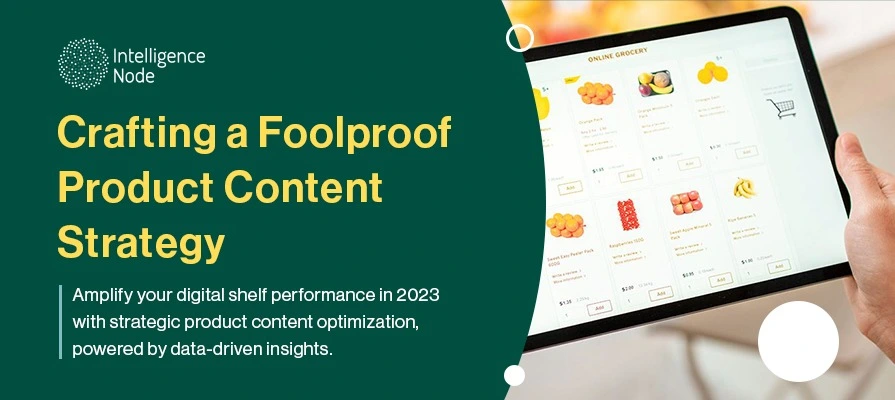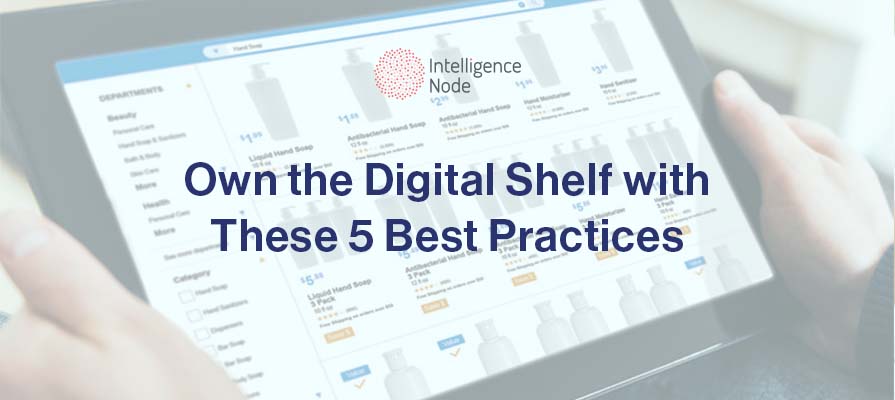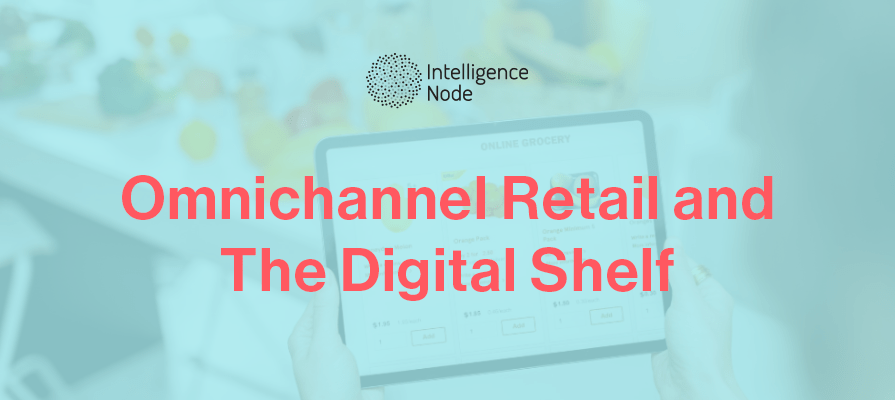Product page optimization and management in 2024
Scrolling through the endless aisles of eCommerce offerings, even among the first few search results on a given SERP (Search engine results page), can feel perplexing to the average modern-day shopper. With an endless array of choices available in just a few clicks, it’s nearly impossible to single out a distinctive ‘ideal pick’ for every consumer- regardless of industry, product quality, and brand. Tech-savvy digital shoppers have adapted to the ways of the new era: learning how to sift through dozens of product alternatives and checking off their own metrics and indicators using data they are able to collect via personal research and information displayed on e-stores.
The brands that are able to meet each of these criteria and shopper expectations win valuable sales: and the brands that don’t, fall behind. This is where the term “Enriched Product Content” takes center stage- this critical, and often overlooked pillar of online shopping has the potential to completely transform a customer’s first (and lasting) impression of your brand. According to Nielsen, “76% Of shoppers prefer to have enhanced product content available when purchasing online.”. This indicates that optimized product content management can also ensure quality engagement with all shoppers who pass through your product catalogs- engagement that is more likely to turn into conversions. Read ahead to understand what “Enriched Product Content” entails, how it could benefit your eCommerce business, and how you can implement it across all your online platforms.
Enriched Product Content
By definition, enriched product content describes the enhancement of information available on the digital shelf via eCommerce websites. Optimizing this content for the digital shelf is a vital aspect of eCommerce success, as it is one of the key factors that influence how products are ranked in search results and online marketplaces. It entails comprehensive, clear, and relevant product-related content for the consumer to engage with. Thus, when online shoppers arrive at your website, they are met with a glut of relevant, informative product content.
Best of all, enriched and accurate product content minimizes the likelihood of returns, as customers are precisely aware of the features of each order and can make informed purchases. Naturally, with comprehensive product content available right on the relevant e-store product page, shoppers are further inclined to stay on the page, scroll through relevant reviews, imagery, and related content, and even make a purchase at your store.

1. Generating Comprehensive Product Content
Product content, in addition to the overall experience of browsing your e-store, should emulate the way people search and shop for products in brick-and-mortar stores. Intuitive displays and easy-to-find products encourage shoppers to browse product content in detail: starting with the basics of accurate and descriptive product attributes. Identifying and amending ‘thin’ spots in product content also enriches the quality of information available to shoppers at a glance, promising a comfortable discovery of items available in your eCommerce store.
2. Advanced PDP (Product Description Page) Features
To keep up with the expectations of the modern digital consumer and to rank high on the digital shelf, it is critical to design and maintain product display pages that meet a wide range of overall customer needs and outperform your competitors’ activity as well. In 2023, ROPO (Research Online Purchase Offline) shoppers have grown in numbers, and are now recognized by retailers worldwide- engaging them with rich product content ensures brand recall, a positive shopping experience, and negates the need to search for alternative products. Thus, to cater to such shoppers and more, it is important to emulate the experience of hand-in-hand product comparisons in brick-and-mortar stores. Simply put, e-stores must evolve.

Immersive features can include high-quality imagery, 360-degree views of products, detailed zoom capabilities, AR try-ons, detailed descriptions of colorway options, materials/ingredients used, distinct pricing and discount details, and compelling brand/logo placement. Each of these has the capacity to create richer interactions with product catalogs. Further still, it has become crucial to consider additional factors such as mobile compatibility, review columns, shareability, wishlists, and “similar product” recommendations on-site.
“Wishlists” and recommendations as well empower shoppers to discuss, save, and identify the products best suited to their needs. According to Nielsen, product pages that utilized additional imagery and video features enjoyed 40% higher conversion rates over those that did not implement an optimized product content strategy.
Digital Shelf Visibility Via Optimized PDPs
The most immediately tangible result or effect of product page optimization is increased digital shelf visibility. Shoppers unable to locate their products on a given site or channel within a few minutes are more likely to click away than make a transaction- making enriched product content a crucial aspect of an effective digital shelf presence.
By simply ensuring robust product descriptions and accurate headers, fixing incorrect product categorization, and amending irrelevant product recommendations, brands can ensure quicker, more impactful discovery of products for better conversions. This is why major search engines such as Bing and Google even consider how well website content matches search intent. Product catalogs packed with keyword-rich content, attractive imagery, and necessary tags enable search engines to automatically rank your page higher on SERPs. This cyclical relationship between content and SERP rankings benefits retailers and shoppers alike, making the digital shopping experience more effective for all.

Other Benefits of Enriched Product Content
Enriched product content strategy, as seen above, is acknowledged as critical largely for digital shelf visibility and SEO purposes. However, optimized product content can serve a larger purpose to eCommerce businesses, adding brand value to key retail touchpoints and creating a long-lasting impact on modern shoppers. Consistent, high-quality, uniform content not only boosts brand awareness and recall but contributes to the following:
1. Identify Fraudulent Sellers & Maintain Brand Uniformity
In recent months, eCommerce businesses have faced intense scrutiny for fraudulent products circulating on online marketplaces. Falsely marked as branded products, these items can damage a brand’s reputation by delivering counterfeit items at slightly marked-down prices, tarnishing the perception of the brand’s authentic quality.
For this purpose, there exist guidelines and criteria regarding image quality, usage of brand assets such as logos, and clear product attribution data on PDPs. Compliance with these global standards of product display pages and descriptors empowers brands to instantly identify fraudulent products such that only branded originals are displayed on SERPs.
In order to ensure peak visibility and ease of discoverability, it is vital for eCommerce businesses to review issues such as irrelevant product recommendations, return or shipping policies, quality traffic, FAQs, and more. Each of these factors contributes to not only a strong digital shelf presence but ensuring your eCommerce business’s visuals and catalogs maintain brand integrity and uniformity across channels, preserving brand value and experience for a global consumer base.
2. Better Product Recommendations
Product recommendations have the potential to amplify profitability in an entirely automated process. With comprehensive descriptions, shoppers and retail software solutions can both easily identify key product features such as material, color, use, etc, and compare them against others. Thus, a shopper buying new running shoes will receive recommendations for running shoes of the same gender, function, and size as what they searched, often from more premium collections, but also shoes of different colors and styles than what they chose, for a greater variety of recommendations.
3. Improved Cross-selling & Upselling
Much like in brick-and-mortar stores, eCommerce businesses with a wide catalog of products benefit greatly from cross-selling and upselling. This entails matching the product a user is purchasing with a relevant item that corresponds to the use of the product. For example, an e-store selling mobile phones may optimize its PDP to display recommendations for phone covers, earphones, cables, etc as an intuitive add-on purchase that can be automatically added to the cart. With enriched product content, product attributes are accurately tagged to make recommendations seamless, adding value to the purchasing experience.

4. Impact on Search & Demand Forecasting
By leveraging the above capabilities and PIM (product information management) data derived from enriched product content, retailers can study the movement of their eCommerce offerings much more precisely. These numbers can help retailers manage their inventory by discouraging bulk wholesale purchases and moving towards demand-led manufacture, decreasing excess inventory, and ensuring the correct items are always available. Understanding sales and consumer data can also help build an impactful product assortment for their customers. Using AI software solutions here can help inform decisions regarding the positioning of low-conversion SKUs, identify the best search terms, minimize returns, and help clean up crowded catalogs.
5. Enhanced Consumer Experiences
Finally, in tandem with all the varied applications of enriched product content, enhanced consumer experience is a leading factor across the board. Any degree of content optimization is bound to benefit online shoppers- in discovery experiences, product research, brand recall, and more. In fact, accurate and comprehensive PDPs can even help control returns, strengthening trust in your eCommerce business for an overall positive experience. Engaging with digital shoppers in this way builds valuable traffic to your website, ensures overall visibility of your e-store catalog, enables shoppers to discover key products, trending seasonal items, and to participate in reviewing and sharing your offerings. Healthy ratings and review sections offer a unique vantage point into mass perception of your brand, and how shoppers perceive your products. This audience connect is an invaluable resource that contributes to building trend-worthy assortments, positive brand experiences, recall, shareability, and long-term success.

The Role of Analytics and AI in Product Content Optimization
Data-driven solutions can add immense value to content enrichment efforts, visibility, assortment management, and pricing strategies, even at a global scale. The applications listed below are some ways in which analytics can inform enrichment strategies to generate results above and beyond manual insight:
- The 80/20 rule: this entails identifying the 20% of your products that drive 80% of sales, and ensuring those product display pages contain fully optimized content.
- Prioritizing private-label brands atop enrichment hierarchies to ensure brand-led products receive sufficient visibility and sales.
- Identifying ‘core’ products is a great way for certain brands to single out their few, brand-defining, crowd-favorite items that can be displayed on landing pages and are optimized to match consumer expectations.
- Use consumer and product data to outline critical markets and applications for certain products, such as high-fashion cosmetics or sports gear, to drive accurate recommendations beyond basic attributes.
- Seasonal items can be promoted rotationally, along with newly launched products for whom topical, relevant content enrichment is key.
- Brands also choose to enrich and boost the products they stock and sell regularly, as opposed to items sourced from suppliers per order.
- Online-exclusive products must also be spotlighted on eCommerce platforms to ensure visibility remains at par with brick-and-mortar stores.
Advanced software suites such as Intelligence Node operate by utilizing such data-driven insights to not only inform and craft your end-to-end retail strategy but keep your business competitive. These processes are entirely automated, enabling your teams to focus on enrichment, development, and sales while staying abreast of competitor activity in real time. To learn more about the scope of AI tools in your retail operations, and to explore Intelligence Node’s state-of-the-art digital shelf solutions book a demo today!




